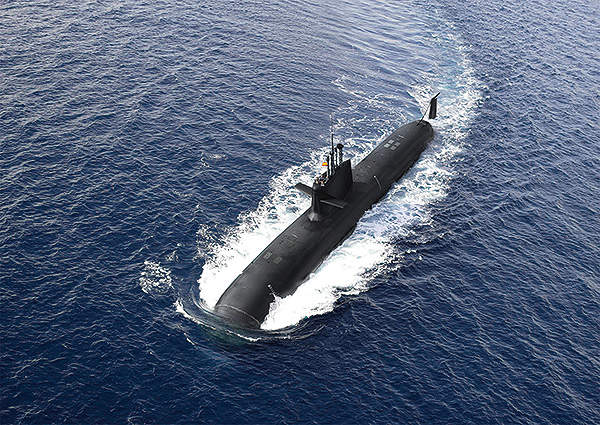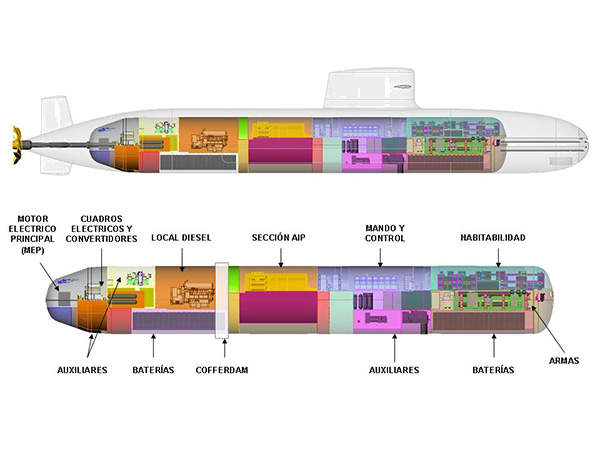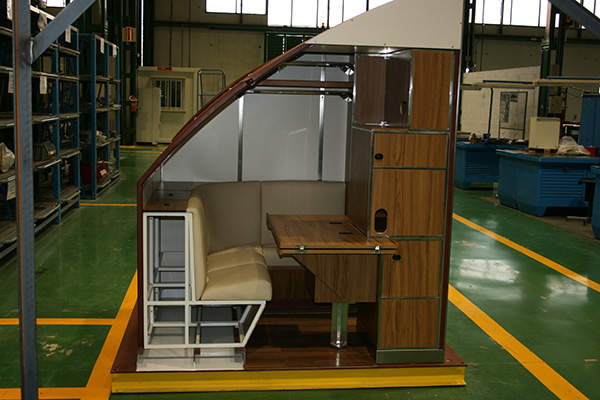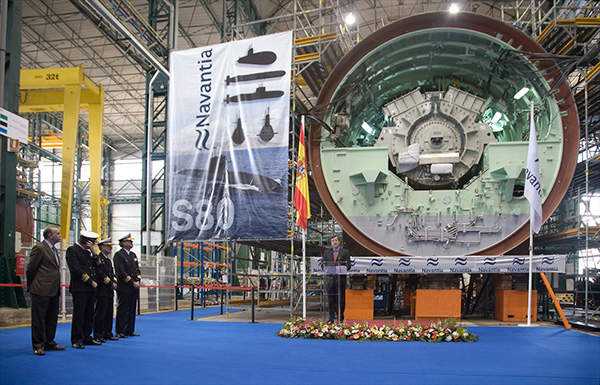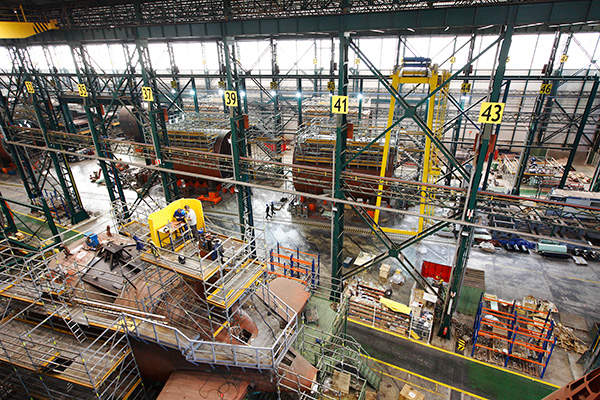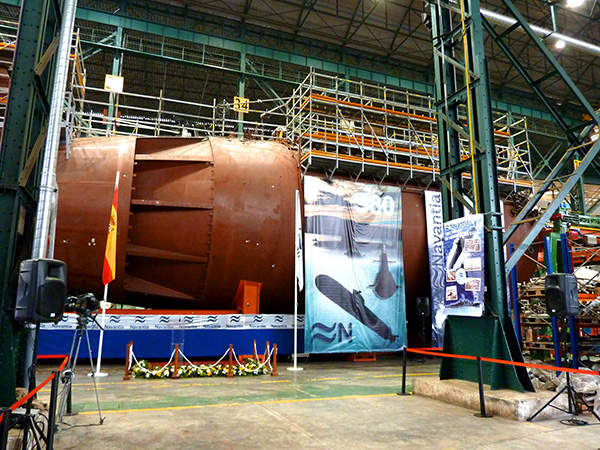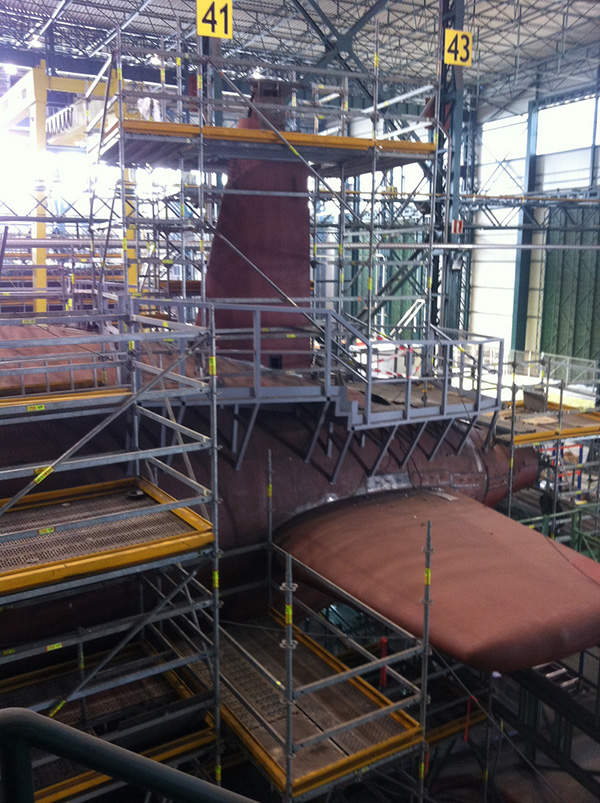The new S-80 class of submarines is being built by Navantia, formerly IZAR, for the Spanish Navy. The submarines include Isaac Peral (S-81), Narciso Monturiol (S-82), Cosme Garcia (S-83) and Mateo Garcia de los Reyes (S-84). Four S-80 class submarines have been ordered by the Spanish Navy.
Isaac Peral, the first S-80 class submarine, is expected to enter service in 2015, followed by Narciso Monturiol in 2016. Cosme Garcia and Mateo Garcia de los Reyes, the last two submarines in the S-80 class, are expected to be delivered in 2018 and 2019 respectively.
The S-80 submarines will primarily carry out naval power projection operations and surveillance activities, and protect and transport both the naval and army forces in littoral waters.
Construction on the S-80 class submarines began in early 2005. The keel for the first submarine was laid and the steel for the second submarine was cut in December 2007. Construction of the third submarine began in 2009. All the submarines are being built at Navantia’s shipyard in Cartagena. BAE in involved in manufacturing and supplying the pressure hull domes from its shipyard in Barrow.
The cost of construction of the four submarines is expected to be €2.2bn ($2.9bn).
S-80 class submarines design
The S-80 class submarines will measure 71m in length and 7.3m in diameter. The hull of the submarine will be 51.76m long.
The surface displacement of the submarines will be 2,200t, while the submerged displacement will be 2,400t. The submarine will accommodate 32 crew members and eight transport personnel.
Development history of the S-80 class
Initial plans for the S-80 Class submarine were brought forward in 1989, with preliminary studies conducted until 1991. Objectives for the submarine programme became clearer during 1997 and 1998.
Two project definition contracts were awarded from 1999 to 2002. The first contract was signed by IZAR (now Navantia) and Spain’s DAM, while the second contract was carried out by IZAR. The contracts were awarded with the purpose of defining the submarine’s prototype.
The construction approval was granted in September 2003 and the construction contract awarded in March 2004.
Sonar suite
Related project
LR5 Submersible Submarine Rescue Vessel, United Kingdom
The UK’s Submarine Rescue Headquarters is based at Renfrew in Glasgow, Scotland.
The S-80 submarine’s sonar suite will comprise of a cylindrical array sonar, a flank array sonar, a passive ranging sonar, and a mine and obstacle detection sonar. These facilities are being provided by Lockheed Martin. The support structures and fairings for the sonars are being provided by Goodrich.
The S-80 will also be integrated with a towed array sonar system, supplied by QinetiQ, an interception positioning system and an own noise analyser.
S-80 combat and command systems
The S-80 class will be equipped with weapons handling equipment (WHE), supplied by Babcock International, and commercial off-the-shelf technologies (COTS) jointly developed by FABA and Lockheed Martin.
The submarine will carry six torpedo launchers and 18 weapons, including mines, DM2 A4 torpedoes, MK48 torpedoes, Harpoon missiles and Tomahawk cruise missiles.
It will be fitted with satellite communication systems developed by Indra and a guidance automation unit distributed intelligence (GAUDI) autopilot system developed by Avio.
The submarine will be equipped with Aries radars, Friend or Foe identification systems (IFF) and modular Pegaso defence electronic systems supplied by Indra.
The submarine will also be enhanced by integrating non-penetrating all-weather optronic imaging systems, hoistable masts and periscopes, which will be supplied by Kollmorgen Electro-Optical and Calzoni.
Propulsion details of the S-80 class submarines
The S-80 will be powered by three diesel engines rated at 1,200kW each, a 3,500kW main electric engine, and a 300kW air independent propulsion (AIP) reactor.
The electric propulsion motors used in the submarine are 20% lighter than those used in Scorpene submarines and generate about 50% more energy compared to other submarines, while operating in the same conditions. The propulsion motors are being provided by Gamesa Electric. The propulsion system will provide a speed of 12kt on surface and 19kt when submerged.
Fuel cells for the AIP reactor will be supplied by UTC Power. The fuel cells will be fed through a bioethanol processor supplied by Abengoa. The reactor will be equipped with a carbon dioxide removal system developed by Bionet.

